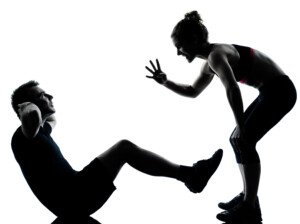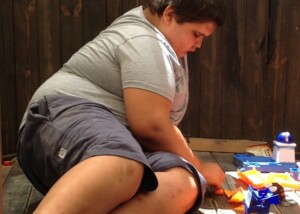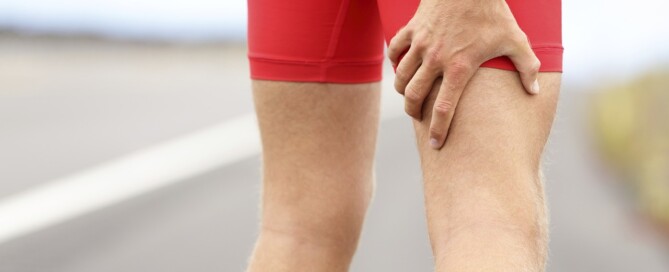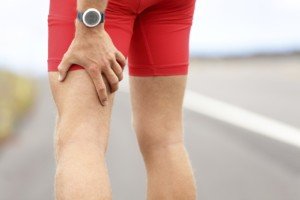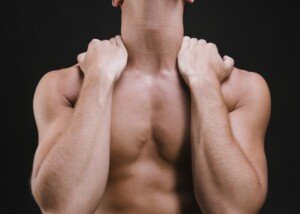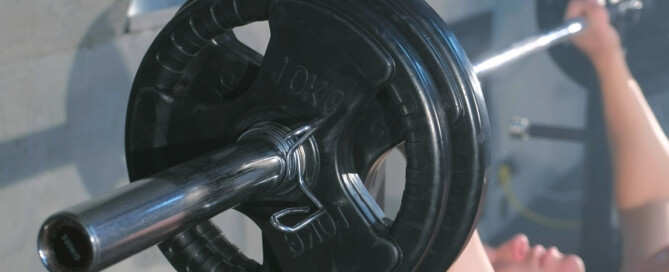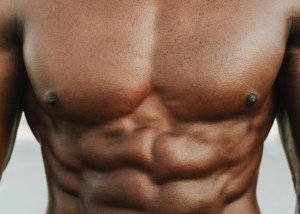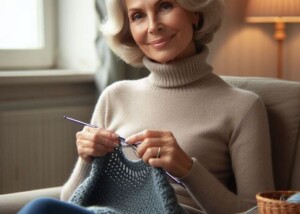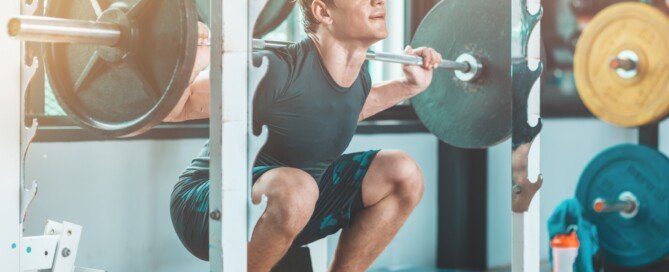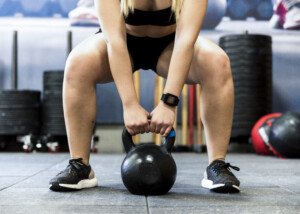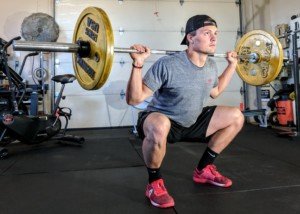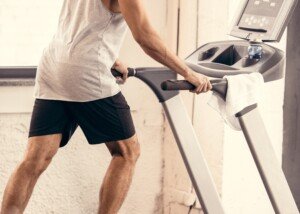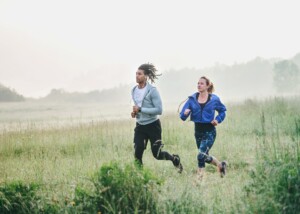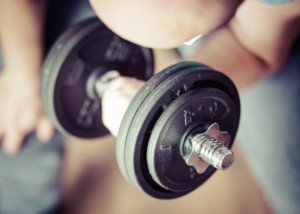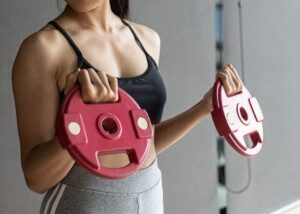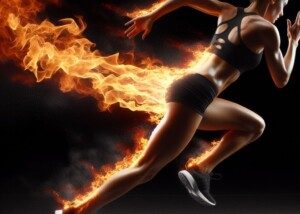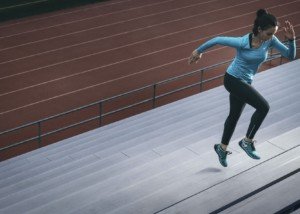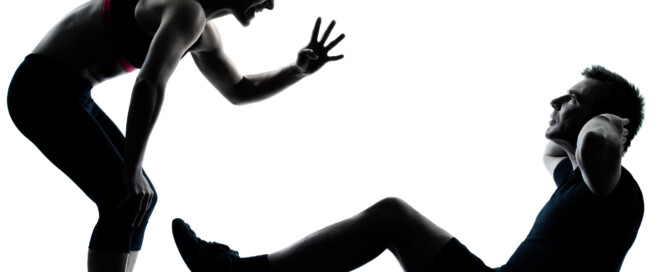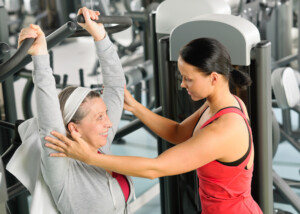Blame Diet & Exercise Habits on Childhood Obesity, Not Genes
Childhood obesity is overwhelmingly the result of bad diet and lack of exercise, rather than genetics or heredity.
“The CDC estimates that 18.5% of U.S. children are obese, and approximately one of every three children is overweight,” says Julie Cunningham, MPH, RD, LDN, registered dietitian and certified diabetes educator.
“The rate of childhood obesity in our country began rising in the 1970’s, which is coincidentally the same decade when fast food became widely available and when soft drink consumption increased considerably.
“Fifty years is less than one lifetime, too short of a time span for our DNA to have changed, so we can’t blame heredity for our collective obesity problem.
“Our increased consumption of grains and added sugars, combined with our lack of physical activity is the reason for overweight in both children and adults.
“We have built cities that require us to use cars instead of biking or walking, and we have chosen to eat food prepared for convenience rather than nutrition.
“My son’s elementary school had ‘walk to school’ day. The school encouraged everyone to drive to a parking lot and then walk to school from there!”
A Study Shows the Obvious
An investigation by the University of Michigan Cardiovascular Center of 1,003 sixth-graders revealed that obese kids were more likely to eat a school lunch rather than a home-prepared meal, and watch TV or play videogames two hours daily.
“For the extremely overweight child, genetic screening may be a consideration,” remarks lead study author and cardiologist Kim A. Eagle, MD, in the paper.
She adds, “For the rest, increasing physical activity, reducing recreational screen time and improving nutritional value of school lunches offers great promise to begin a reversal of current childhood obesity trends.”

Shutterstock/Natee K Jindakum
For those who believe that childhood obesity is primarily fueled by genetics, ask yourself why childhood obesity rates have soared over such a short period of time.
The obesity prevalence in American youth age six to 11 was 6.5 percent in 1980, yet a whopping 19.6 percent in 2008.
Genetics do not explain this. The explosion of computer use, however, does, along with more and more junk food TV commercials and restaurants popping up everywhere.
Look at what children did in their spare time during daylight hours 50 years ago, compared to today.
They sit before computers mindlessly eating, whereas 50 years ago they ran about outdoors or did a lot of walking collecting stones, leaves or exploring the neighborhood.
The U-M researchers showed that 58 percent of fat kids had spent two hours watching TV the previous day.
The figure for health-weight kids was 41 percent. This difference is statistically very significant.
The study showed that far fewer obese children regularly exercised, participated in gym classes or played sports.
You might argue that obesity impedes sports participation, rather than lack of sports participation causes obesity.
However, obese kids have youth on their side and can fully participate in athletics.
Though they won’t be the fastest runners or quickest movers, they still have functioning muscles and bones, and can be quite active in the field or on the court.
The diet and exercise habits of the heavy kids in this study were markedly different than those of the normal-weight children, and thus, the conclusion was that lifestyle is much more tied to obesity than are genes.
“If diets and physical activity were similar in obese and non-obese students, this would argue for a stronger genetic basis for obesity in children,” says the study paper.
The study also revealed that virtually all the participants, regardless of size, reported unhealthy habits.
Though thin kids have been known to have unhealthy diets, their portion sizes tend to be a lot smaller than those of obese children.
 Julie Cunningham specializes in helping men and women with diabetes and prediabetes learn how to eat to manage their blood sugars–so they can get back to the things they enjoy.
Julie Cunningham specializes in helping men and women with diabetes and prediabetes learn how to eat to manage their blood sugars–so they can get back to the things they enjoy.
 Lorra Garrick is a former personal trainer certified through the American Council on Exercise. At Bally Total Fitness she trained women and men of all ages for fat loss, muscle building, fitness and improved health.
Lorra Garrick is a former personal trainer certified through the American Council on Exercise. At Bally Total Fitness she trained women and men of all ages for fat loss, muscle building, fitness and improved health.
.
Top image: Shutterstock/Yuriy Golub
Source: sciencedaily.com/releases/2011/01/110131092149.htm
Muscle Twitching in the Same Spot Over and Over
Is one particular spot of your body a hot area for muscle twitching?
In other words, you keep getting muscle twitches in that same spot all the time?
• Every day but only a few times
• Multiple times every day or almost every day
• Cluster twitching: a run of twitches and then a long quiet period, and then it kicks up again—the same cycle over and over
Fasciculations (the medical term for twitching muscles) that occur in the same area on a repeated basis will get your attention.
Some people are able to just brush it off, while others, knowing that a world of knowledge is just a mouse click away, will google for answers.
And soon after doing that, you’ve learned that a phenomenon called “muscle twitching” is listed as one of the symptoms of ALS.

Shutterstock/Dima Sidelnikov
But those medical sites don’t say much more, such as whether or not frequency and the same location all the time mean a greater likelihood of ALS.
There are various reasons a muscle may twitch at random. Often, a person isn’t even aware when this happens.
Benign causes include after exercising, too much coffee, stress, anxiety and trouble sleeping.
So if you just happen to feel some fasciculations and know exactly where they are occurring, and notice that this keeps happening in the same spot, you may start worrying about ALS — even though ALS is at the bottom of the heap as far as likely causes.
Muscle twitching in the same spot over and over is normal and nothing to panic about.
“The key point with benign fasciculations is that they occur but do not represent an ominous underlying condition,” explains Kristina Lafaye, MD, a board certified neurologist specializing in clinical neurophysiology and neuromuscular medicine with Tulane Doctors Neurosciences.
“Yes, some people with benign fasciculations could experience them 24/7, but if nothing else is wrong, then I wouldn’t probe further,” continues Dr. Lafaye.
“I don’t do any kind of frequency count, because if a person doesn’t have evidence of denervation which, if present, would indicate a motor neuron disease, myelopathy, or some other condition, then it doesn’t warrant any further neurologic evaluation.”
Next time one of your hot spots acts up, remind yourself that there are people panicking because their fasciculations are ALL OVER their body, and how relieved they might be if they had YOUR problem!
Perhaps the most common areas for twitching to occur are the eyelids, calves and the arches of the feet.
Imagine how many times every day your eyelids blink; they’re not immune to fatigue and strain.
Your feet and calves must support your body weight every time you walk. They don’t have the easiest job.
If the muscle twitching happens frequently on a chronic basis, you should see a doctor to uncover the underlying cause.
It may still be benign, such as a magnesium deficiency. This mineral helps prevent muscle tension — which of course, could lead to twitching.

Dr. Lafaye is triple board certified: neurology, clinical neurophysiology and neuromuscular medicine from the American Board of Psychiatry and Neurology. Her expertise and leadership continue to make a significant impact on patient outcomes.
.
 Lorra Garrick has been covering medical, fitness and cybersecurity topics for many years, having written thousands of articles for print magazines and websites, including as a ghostwriter. She’s also a former ACE-certified personal trainer.
Lorra Garrick has been covering medical, fitness and cybersecurity topics for many years, having written thousands of articles for print magazines and websites, including as a ghostwriter. She’s also a former ACE-certified personal trainer.
Source: alsa.org/about-als/symptoms.html
Why Bench Pressing Causes Muscle Twitching in the Pecs
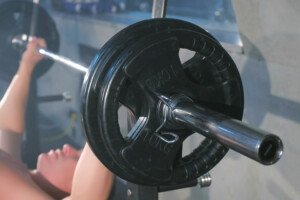
Do you find that your pectoralis muscles twitch after a set of bench presses, either right after or a few hours after?
Twitching can mean a neurological disease—but only in very rare instances, and the “twitching” in those instances is not the same as the twitching you feel when your muscles are just plain tired or when you’re under stress.
With all that said, though, what causes your chest muscle fibers to twitch after bench pressing?
“For those of you who bench press, the major upper chest muscle that provides the strength for pushing up weights is the pectoralis major,” notes Anthony P. Geraci, MD, associate professor of neurology at Donald & Barbara Zucker School of Medicine in New York.
“It would be very normal to feel a twitch in the chest,” says Dr. Geraci, “and many people feel that the twitch is deep and perhaps even under the pectoralis major.”
Keep in mind, though, that the pectoralis major is a power-producing muscle with a lot of fiber packed into it.
“There are only two muscles under the pectoralis major,” says Dr. Geraci. “The pectoralis minor and the intercostal muscles, neither of which contribute much to the power needed to bench press.”
Function of the pec minor: “The pectoralis minor rotates our upper arm; the intercostals allow us to expand the chest when we inspire (breathe in).”
Feeling twitches in your pec muscles after bench pressing?
“If you feel a twitch in your chest but don’t actually see it, that is because twitches can occur anywhere in the muscle, and if they are in the deep part of your pectoralis major, you probably won’t see it, depending on the bulk of your muscle.”
Stop worrying.
“Not to worry though, it is still just a benign fasciculation (twitch),” assures Dr. Geraci, “and you can keep on pushing up that bar!”
After bench pressing, in which the cells have been stimulated and injured (but a good kind of injured) by this compound movement, chemical changes are triggered.
The muscle cell membranes have been challenged (think of what happens as you strain to complete a set of eight repetitions with a heavy barbell — that’s a lot of load on the cell membranes).
The “chemical soup” of the muscle fibers is changed and this leads to what seems to be a random innervation of nerves that contract the fibers in the pecs: what you perceive as twitching.
Think of it this way: Twitching muscles following your bench press routine mean that you trained with gusto and have stirred up the ingredients for adaptation—which leads to hypertrophy.
 Dr. Geraci is also the director of neuromuscular medicine at Northwell Health in New York.
Dr. Geraci is also the director of neuromuscular medicine at Northwell Health in New York.
 Lorra Garrick has been covering medical, fitness and cybersecurity topics for many years, having written thousands of articles for print magazines and websites, including as a ghostwriter. She’s also a former ACE-certified personal trainer.
Lorra Garrick has been covering medical, fitness and cybersecurity topics for many years, having written thousands of articles for print magazines and websites, including as a ghostwriter. She’s also a former ACE-certified personal trainer.
.
Top image: Shutterstock/Vadim Zakharishchev
Cure Pre-Retirement Jitters: Learn to Lift Heavy Things

Suffering from pre-retirement jitters & anxiety? Beat it out by training to lift heavy things; hit the gym!
A barbell will make the jitters vanish because nothing beats anxiety like knowing you’re training your body to become stronger—which will turn back the clock.
When I was 53 I was set to retire in less than two weeks (was a personal trainer years ago, but since then have had a proofreading business).
I was SO looking forward to this! I’ve been looking forward to retirement since I got my first job at age 16.
When I was 14, a slightly older teen girl told me she wanted a job. I thought she was nuts.
Let’s assume your pre-retirement jitters are NOT related to money, that your monthly income will easily take care of your living expenses.
In many cases, pre-retirement anxiety, despite a person having a good pension or anticipated income stream, stems from:
• Fear of boredom
• Losing one’s identity (their job defined them)
• Distress over no longer having a schedule
I don’t know how to say this without sounding harsh, but…are you not aware that there are 20 billion things to do out there?
How can you be bored in retirement or anticipate boredom? Why would you want someone ELSE to dictate your schedule?
One time at a job, I was in the bathroom for a while with diarrhea. Finally I returned to the work floor.
Like a vulture, the supervisor questioned where I’d been. Who in their right mind would want to live like this?
Learn to Pick Heavy Things Up
Take up powerlifting. You are not too old. Ask Shirley Webb, 81 (as of 2019), of East Alton, IL, who can deadlift 253 pounds for one repetition. She began strength training only several years prior.
If retirement is imminent for you, I’m going to assume you’re in your 60s — a child from Webb’s point of view.
Get involved in powerlifting. Get this all set up so that soon after your last day of the 40-hour-a-week grind, you can get started.
In other words, get the gym membership if you already don’t have one. Perhaps hire a trainer and start date.
You can learn powerlifting and strength training without a trainer if you don’t want to invest the money.
I just don’t see how anyone can experience post-retirement anxiety and jitters when they now have an exciting new hobby: lifting weights.
The sport of powerlifting (yes, there are competitions for seniors) involves three lifts: deadlift, back squat and bench press.
Learning to perfect your form with these moves will distract your mind from pre-retirement and post-retirement jitters.
Webb advanced pretty quickly, beginning with just 40 pounds. You, too, may advance much faster than you’ve ever dreamed possible.
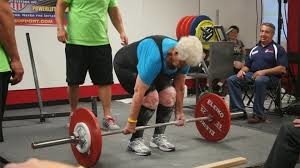
Shirley Webb
Knowing that your body is becoming stronger and younger will quash any anxiety.
When Webb first began working out, she needed help getting off the floor and could barely climb a flight of stairs.
So if you feel old, tired and drained, there’s only one magical elixir that will fix that: weightlifting.
In your retirement, you will be able to visit the gym pretty much whenever you please, and will never be able to say, “I don’t have enough time for exercise.”
Strength training and powerlifting will skyrocket your fitness level, making it easier for you to do other things that you might have been thinking you’re “too old” for.
I’ve been lifting weights for years, so that’s not going to change once I retire. However, retirement will give me the time to get back into martial arts. I’d like to try hapkido.
I also want to check out a parkour gym and see if I can take to this intriguing sport.
A once-a-week yoga class is also on my post-retirement roster. So is trying every chocolate cake and pizza in town.
There just won’t be any room for anxiety or jitters!
Even if you’re not much into physical endeavors, think of all the non-athletic activities you can take up: learn a new language, start a blog, try a new hobby (watercolor painting, woodworking, model ship building, gardening, a bowling league, bridge, baking, a new musical instrument, hiking, swimming).
Certainly, there are causes you’ve always been passionate about. You’ll now have time to DO something and make a difference. And you can get to know your grandkids more.
But back to the powerlifting and strength training. I’m serious here. There’s nothing like knowing you can lift much heavier weight than people half your age.
Webb’s 253 pound deadlift is just insane. Most young men off the street can’t even deadlift 135 pounds.
You don’t have to lift as much as Webb, though, to crush pre- and post-retirement jitters; just get IN the gym and go for it!
 Lorra Garrick has been covering medical, fitness and cybersecurity topics for many years, having written thousands of articles for print magazines and websites, including as a ghostwriter. She’s also a former ACE-certified personal trainer.
Lorra Garrick has been covering medical, fitness and cybersecurity topics for many years, having written thousands of articles for print magazines and websites, including as a ghostwriter. She’s also a former ACE-certified personal trainer.
.
Top image: Depositphotos.com
Source: abcnews.go.com/US/meet-78-year-grandmother-dead-lift-245-pounds/story?id=38029643
Why Do Squats Cause Quad Muscles to Twitch?
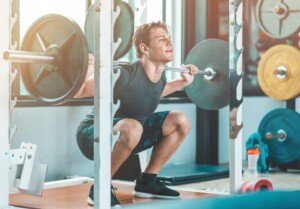
There’s no need for alarm if your quad muscles twitch up a storm after thrashing them with your squat routine.
Though muscle twitching can signal disease in very rare instances, this should be the furthest thing from your mind after you just squatted 225. (more…)
Crushing Your Fear of ALS & Twitching Muscles for Good!

Haven’t you suffered enough with constant anxiety over ALS because of your twitching muscles and perceived atrophy? Get ready to beat your fears!
End the Agony
“Fasciculations can appear in almost any muscle,” points out Daniel Kantor, MD, director of the Neurology Residency Program, Florida Atlantic University.
“When we overuse a muscle,” he says, “it can twitch…your leg muscles may twitch after a long run.”
Anxiety is a strong trigger of twitching muscles.
Your body is gearing up for a fight or flight; think of the twitching like a car engine being revved up.
Another source of your suffering may be perceived weakness and noticing that your body is not symmetrical.
For instance, what appears to be atrophy. Suddenly, one calve is smaller than the other, or your left biceps is smaller than your right.
Your anxiety has remodeled your ability to think rationally; suddenly, after living for all these years, you’ve decided that a little asymmetry must mean muscle atrophy. Where did THIS come from?
“Our bodies are not bilaterally symmetrical,” notes Marc I. Leavey, MD, a primary care physician with 40-plus years of experience.

Some notable (but benign) asymmetry going on in this competitive athlete.
“Even identical twins have subtle differences,” points out Dr. Leavey. He adds, “If you are right handed, your right arm will be a bit more developed from the increased use over years.”
ALS Panic
Upon realizing that muscle twitching can be a symptom of ALS, some will study up on this disease and learn that weakness and cramping are also symptoms.
These individuals then begin perceiving weakness and cramps.
This is why, when one realizes this sequence of symptoms, they begin manufacturing a reality of muscle weakness.
This leads to obsession with repeatedly testing out the perceived location of weakness with various “strength tests.”

Depositphotos.com
This can really be time consuming on a daily basis. This preoccupation develops into making constant visual comparisons of one body side to the other, checking for muscle atrophy.
Get a large calendar; every morning put a red star or draw a big red X on that day.
Soon, you’ll see a string of red marks—and as you see the red marks accumulate, this will grow your reassurance of the increasing time behind your self-diagnosis of possible ALS.
It won’t be long before you have 30 days behind you…then two months, then three months—and you’re still able to run up a flight of stairs or run after your kids.
The torment of thinking you’re dying will get further and further behind you as those red marks grow in number.
Like Dr. Leavey notes, the body is not symmetrical. If you inspect for asymmetry, you’ll find it.
It’ll be your ears, your collarbones, your kneecaps, your fingers, your forearms, your thighs and hips — you’ll find it all over.
You’ll see it in other people too. Watch people who are walking ahead of you. You’ll see asymmetry everywhere.
You must let this fear go. You must stop the remodeling of your ability to think logically. Chronic anxiety remolds the mind. This suffering has to end!
Terrified of ALS? Aim to go 15 minutes without thinking about this malady and ignore twitching muscles, symmetry comparisons, etc. Next step: Aim for 30 minutes.
Keep increasing the time. Forbid yourself to ruminate about ALS for specified time periods.
This will gradually “remold” your thought patterns to a more sensible place.

Dr. Kantor is also President Emeritus, Florida Society of Neurology.

Dr. Leavey was formerly with Mercy Medical Center in Baltimore, MD, where his focus was primary care and internal medicine. He has a blog, STRING OF MEDICAL PEARLS.
 Lorra Garrick has been covering medical, fitness and cybersecurity topics for many years, having written thousands of articles for print magazines and websites, including as a ghostwriter. She’s also a former ACE-certified personal trainer.
Lorra Garrick has been covering medical, fitness and cybersecurity topics for many years, having written thousands of articles for print magazines and websites, including as a ghostwriter. She’s also a former ACE-certified personal trainer.
Top image: Shutterstock/ BsWe
Sources:
mayoclinic.org/diseases-conditions/amyotrophic-lateral-sclerosis/basics/definition/con-20024397
cdc.gov/als/whatisals.aspx
neurologique.org/
Does Lots of Walking at Work Count As Cardio Exercise?

All that walking you do at work does not count as aerobic exercise; stop kidding yourself and learn why you need to do “real” cardio despite aching feet after work.
Aching feet at the end of the workday does not equate to having done a sufficient degree of cardiovascular exercise. Your feet ache; get new shoes.
If your legs are aching after a full day of work, this indicates that you’re not as physically fit as you think you are.
Though aching legs can mean a medical condition involving veins, a deconditioned but otherwise healthy person will often suffer from aching legs after doing a lot of walking at the workplace.
If you’re a medical professional, teacher, maintenance worker, maid/custodian, server, retail employee or in some other line of work that requires you to constantly be walking from point A to point B, you absolutely still need to set time aside, at least twice a week, for structured aerobic activity.
We don’t need to get scientific about this.
We can get anecdotal.
Let’s suppose that your only “exercise” is all the walking you do on the job. And that’s it.
- You don’t do athletics.
- You don’t dance, take fitness classes or do anything else BUT the walking at the workplace.
Then one day you decide to jog for 10 minutes nonstop in your neighborhood. Go ahead, try it. See what happens.
You will feel miserable, especially if you’re overweight.
Here’s another test: Find a long, long hill and briskly walk it. Keep moving, briskly.
What happens? Feels awful, right?
- Jump rope. How long can you go?
- Can you run up a hill?
- Can you run from one end of your street to the other?
- Try hiking. How long before you’re exhausted and need to stop for a rest?
- Can you run across a field of grass or must you stop after just 20 seconds due to breathlessness?
- Can you run up several flights of stairs without stopping?
- Can you even WALK them without feeling beaten down?
Does your heart rate even get elevated while on the job? If hurrying down a corridor drives up your heart rate, this is indicative of poor physical conditioning, not a great workout.
A person in fine shape will not notice an elevated heart rate or get winded upon hurrying down a corridor to make a meeting.
Being on your feet all day at the workplace, doing a ton of walking, does nothing to strengthen the cardiac muscle — unless you’re somehow able to insert periods of very brisk walking, and I mean brisk.
But this is not likely if you’re a server, due to limited space and opportunities.
A medical professional may be able to find opportunities to take 4 mph stints down long corridors. Same with a maintenance worker at that hospital.
But let’s face it: You’d still be limited to just episodic, very brief periods of only 4 mph movement, and even if it was jogging, it’d be too brief to have any marked impact on cardiovascular conditioning.
In other articles I’ve written, I’ve preached the virtues of very brief episodes of movement — but when done intensely, such as a SPRINT down that corridor, or 30 seconds of squat jumps.
But a fast walk? A trot? One minute here and there is marginal towards heart health.
You cannot compare walking all day on the job to, say, 30 minutes of hiking uphill, or time spent in a step aerobics class, or 30 minutes of jogging nonstop.
The walking you do at work is in the name of carrying out your job duties.
Exercise, for heart health, should have an entirely different time slot in your day, reserved just for that. A dedicated time.
 Lorra Garrick is a former personal trainer certified through the American Council on Exercise. At Bally Total Fitness she trained women and men of all ages for fat loss, muscle building, fitness and improved health.
Lorra Garrick is a former personal trainer certified through the American Council on Exercise. At Bally Total Fitness she trained women and men of all ages for fat loss, muscle building, fitness and improved health.
.
Top image: Shutterstock/sirtravelalot
Can You Build Arm Muscle Size Running with Hand Weights?
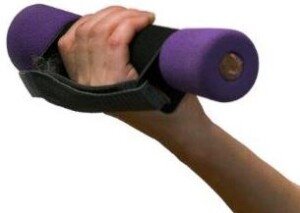
There’s a very logical reason why it’s impossible to build muscle mass in your arms or biceps simply from running with hand weights.
Don’t think for a moment, if you’re wanting to build bigger muscles in your arms or biceps, that you’ll achieve this by holding hand weights while jogging or running.
On the other hand, if you fear growing big muscles from holding hand weights when running or jogging, rest assured, this will never happen.
Anybody in the gym who is seriously training to build arm muscle would laugh at the idea that jogging while holding two-pound hand weights (or five-pound, for that matter) will cause hypertrophy (muscle growth).
This is kind of like saying that if you gained 20 pounds of fat from overeating, and went jogging with this extra weight, that it would trigger an increase in the muscle mass of your arms (since some of that added weight would be in your arms).
Running with hand weights increases the resistance or stress on the body, with that increase mostly concentrated in the arms and shoulders.
But while this is happening, the activity is aerobic, rather than anaerobic. In other words, the activity is duration based with minimal exertion, vs. explosive or power based with maximal exertion, as would be a bench press or barbell curl.
While your hands are holding the weights during your run, slow twitch muscle fibers are being recruited in your arms and shoulders—the same as if you were not holding any weights.
Slow twitch fiber is built for endurance, sustained activity, and these fibers are not capable of growing bigger.
They become more efficient over time at the duration based activity, but they don’t change in size.
This is why long distance runners are not bulked up or thick with muscle.
To build arm size you must impose a relatively heavy load onto these muscles, such as during weightlifting exercises (bench press, row, dip, curl).
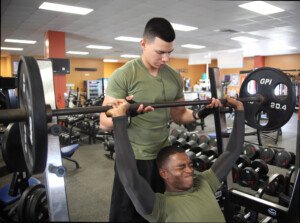
Since the arms are bent while the jogger is holding the weights, this indicates that the biceps get the brunt of the load.
But the load is only two more pounds. Thinking that this can build up the biceps is like thinking that standing still and continuously curling two-pound dumbbells for 30 minutes will build up these muscles!
Who tries to build up the arms curling the gym’s tiniest dumbbells for 30 minutes nonstop?
All this will do, whether you’re standing still, seated or running, is increase the stamina in your arms and shoulders as it pertains to keeping the arms bent or repeatedly flexing the elbow with little to no resistance. Nothing more. No change in muscle size.
 Lorra Garrick is a former personal trainer certified through the American Council on Exercise. At Bally Total Fitness she trained women and men of all ages for fat loss, muscle building, fitness and improved health.
Lorra Garrick is a former personal trainer certified through the American Council on Exercise. At Bally Total Fitness she trained women and men of all ages for fat loss, muscle building, fitness and improved health.
.
Top image: Sergei Popov, Dreamstine.com
Can Older Women Do High Intensity Interval Training Safely?

An older woman need not fear high intensity interval training.
In fact, HIIT is one of the best things an aging woman can do for her body, even if she’s always been sedentary. (more…)
Can a Man Benefit from a Female Personal Trainer?
